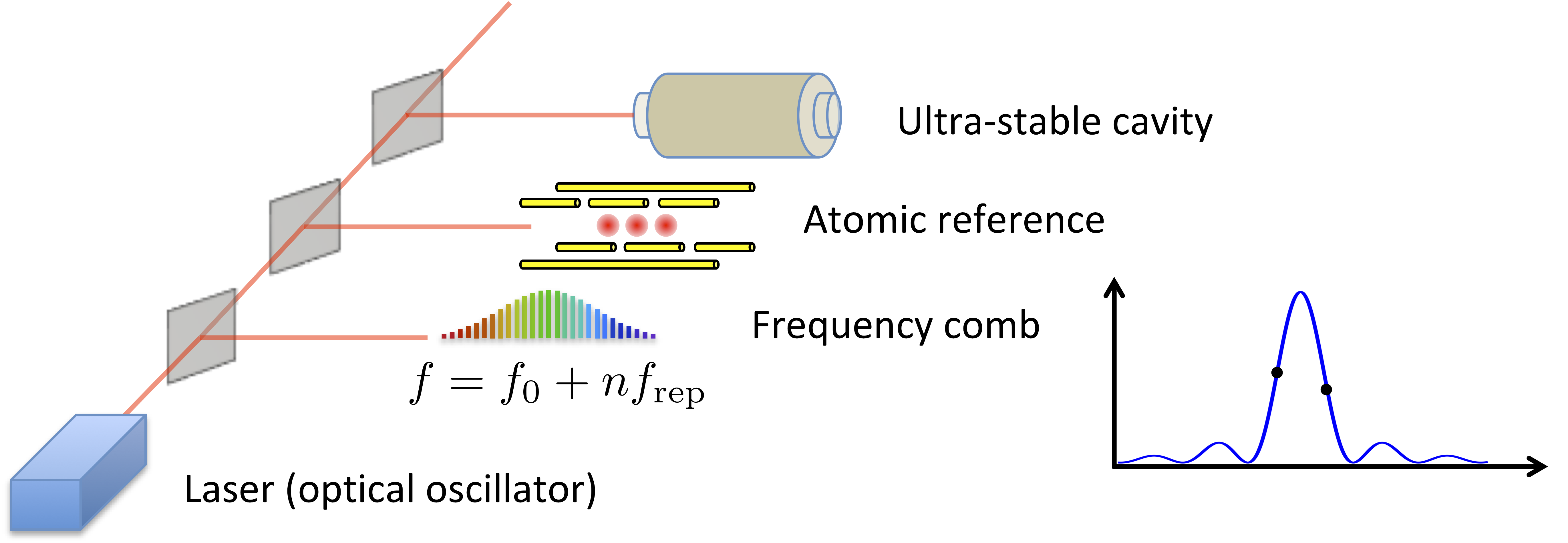What is an atomic clock?
Any clock is basically an oscillator: a recurrent, periodic
process providing a continuous and stable reference frequency.
Each oscillation is counted to determine a period of time. In an
atomic clock, the oscillator is an electromagnetic field, which
drives a transition within the atom when tuned to the correct
frequency. The atom thus serves as a frequency reference for the
oscillator.
In an optical atomic clock, the oscillator is an
ultra-stable laser and consists of three core components:
An ultra-stable optical cavity that provides very
narrow resonances to which the laser is locked. This
provides short term (<10 s) frequency stability so the laser
can probe the narrow resonances of the atom. Over longer
timescales, the cavity resonances are prone to drifts and
thermal noise fluctuations.
An atom with a high Q transition to serve as a reference
frequency. Repetitive probing of the transition provides a
signal to compensate drift of the cavity resonance.
A frequency comb, which provides a "ruler" in
frequency space and an effective counter for oscillations of
the laser field.
What makes a "good" clock?
There are two measures to quantify how good a clock is:
Accuracy - characterizing how well defined or reproducible the frequency of the oscillator is. For an atomic clock this is determined by how well we can characterize perturbations of the atomic transition induced by the environment, and
Stability - characterizing how well we can measure the frequency. For an atomic clock, this is often limited by projection noise: the noise associated with the random nature of measurement in quantum mechanics and is dependent on averaging time/number of measurements.
We typically specify the complements of these quantities:
inaccuracy and
instability. For fair
comparison between clocks of different frequency, these are
expressed fractionally relative to the clock frequency.

